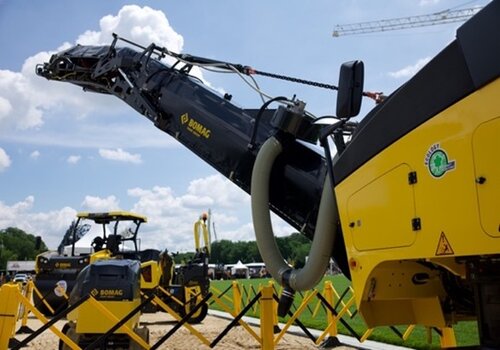If you are in a mental health crisis, call or text 988 to speak to a crisis counselor now. You can also text HOME to 741741 to reach the Crisis Text Line and speak to a live, trained crisis counselor. Learn more about the Suicide & Crisis Lifeline 988.
It’s become clear that mental health struggles affect everyone. We don’t get to plan when these events happen. Whether it’s a period of depression, panic attack or anything else, it seems like they occur when it’s the most inconvenient. This is a problem when you work in construction. The job can be dangerous, and accidents happen even if you’re feeling 100%.
Never has it been more important to pay attention to what our bodies tell us and take action.
We have talked a lot about employee assistance programs (EAPs) and how workers can use them to their highest benefit, but there are also coping strategies you can use immediately.
MENTAL HEALTH FIRST AID ON THE JOB SITE
A job site can be overwhelming and stressful, but taking time to take care of yourself can be done just about anywhere. Whether you’re feeling stressed already or think you’re getting to that point, try some of the following techniques:
- Take regular breaks: Productivity is important, but so is self-care. Regular breaks are known to decrease burnout and improve focus. This can also be considered a preventative approach—take a break before you feel the side effects of stress and anxiety.
- Make breaks more mindful: Knowledge of meditation and mindfulness is on the rise. Deep breathing has mental and physical health benefits. There are phone apps that provide guided meditation, mindfulness and breathing exercises. You can also quickly search for techniques online and write down or keep notes on your phone so you have access to the practice everywhere you go.
- Stay hydrated: You likely hear about this a lot during the summer months, but staying hydrated is a year-round necessity. Water keeps your joints lubricated and organs functioning correctly.
- Positive self-talk: It’s easy to get bogged down by mistakes or worrying about the future, but reducing negative thinking can help reduce anxiety. Repetitive negative thinking is a risk factor for persistence and relapse in depression and anxiety. So, stay positive – especially when it seems the hardest.
- Social support: We don’t always become best friends with colleagues, but sometimes those relationships grow – especially when you’ve worked with the same people for a long time. Finding your support group is crucial when you’re not at work, but you can also build a network of trusted colleagues, too. Maybe someone else has experienced a similar situation and you feel comfortable sharing thoughts with them. If not, contact someone in your support group via phone or text, if available. A little bit of encouragement on your next break can go a long way.
- Be real: Trying to improve yourself is a noble task but should be done with realistic goals in mind. Keeping goals realistic helps prevent burnout and builds self-esteem.
It’s important to maintain your well-being outside of work, too. Good sleep hygiene, engaging in hobbies and mindfulness techniques and having time for relaxation will increase the benefits of the actions you take at work as well.
These work conditions may enable workers to find value in their lives and reduce the need to self-medicate with alcohol and other drugs.
L. Casey Chosewood, M.D.
Director, NIOSH Office of Total Worker Health
HOW’S WORK?
“Negative work conditions include exposure to stigma and discrimination, excessive demands, abusive coworkers and supervisors, job insecurity, hazardous physical work and being injured,” says L. Casey Chosewood, M.D., director of the NIOSH Office of Total Worker Health. “These work conditions undermine the initiation and maintenance of recovery by increasing the possibility of using alcohol and other drugs to self-medicate the resulting negative emotions and physical pain.
This is why a positive work culture is important. You don’t always know what a person is dealing with outside of work and more stress on the job can make the situation worse. But this also means the workplace can be part of the solution, too.
From employee assistance programs to encouraging regular breaks and keeping an open-minded culture, the workplace can decrease stress that can add to depression, anxiety or other mental health concerns. It can even be healing in its own way.
“Positive work conditions, like fair treatment, recognition, meaningful work and social support allow employees to become engaged and thrive at work. These work conditions may enable workers to find value in their lives and reduce the need to self-medicate with alcohol and other drugs,” Chosewood says. “They may also increase the experience of positive emotions, which tend to be associated with increased creativity and a broader perspective on problem-solving that may help develop skills and resources needed to initiate and maintain recovery.”
Content Notes: The CONEXPO-CON/AGG 365 newsletter has featured content about mental health over the past few months, and will continue to do so throughout the year. While these topics can be challenging, we want to remind you about one underlying feature: hope.
We will tackle topics related to suicide, PTSD and other mental health conditions that are prevalent in the construction industry. There are resources to help – whether you need help yourself or want to help a friend. Where there is help, there is hope.
One way to attack the mental health stigma is by telling your story. Please contact us if you would like to share your journey with fellow CONEXPO-CON/AGG 365 readers.
Another way to help is to share this story on your social media or with someone who may benefit from hearing about mental wellness in the construction industry.
Photo credit: FRIENDS STOCK/BIGSTOCKPHOTO.COM












